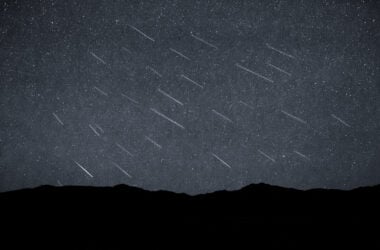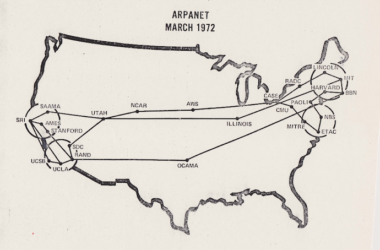Earlier in this issue, we talked about quantum computing and how weird it can get. Did you know, however, that quantum physics can get even weirder than that?
There’s an experiment that scientists do to show just how weird quantum physics can be. It’s called the “double slit experiment,” and as you might guess from the name, it involves shoving stuff through two slits.
We’re not just throwing any old thing, however; we’re shoving things we can’t see with the naked eye through them. This is because the double-slit experiment can tell us if something is a particle or a wave without having to squint through a microscope
The premise is simple; if you pass particles through two nearby slits, they’ll continue travelling forward until they hit a wall behind it. The particles will only hit the spots on the wall that are parallel to the slits. You can imagine the particles like paintballs; only the spots on the wall adjacent to the slits will get hit.
A wave, however, works a little differently. When demonstrating how a wave interacts with the double-slit experiment, scientists like to shine light through the two slits, because we know it’s a wave and you can see the results with the naked eye. However, you can use any wave, as long as the two slits are a wavelength apart.
When you send a light wave toward these two slots, they won’t just travel through the slits and go straight to the wall. This is because, when the wave goes through the slits, it creates a ‘mini wave’ at each slit. These mini waves then bump into each other and mess things up a bit.
This is like if you drop two stones into a pond at the same time. The ripples from each stone will meet up with one another. Some will cancel each other out, and some will merge into one big mega-ripple.
As such, when you observe a light wave hitting the wall on the other side, you won’t see two columns of light parallel to each slit. Instead, you’ll see multiple blips of light where the waves merged together, and darkness where the waves cancelled each other out. The really smart term for this is “diffraction pattern.”
So, if something is a particle, it travels straight through the slit and arrives on the other side. If it’s a wave, it’ll create a diffraction pattern due to the mini-waves interacting with one another. Easy!
So, is quantum stuff a particle or a wave? Well, scientists decided to check by sending electrons through the two slits. When they did, they saw it made a diffraction pattern. Easy peasy–this means electrons move like a wave… right?
However, things got weird when they only sent electrons through one of the two slits. When they did, the diffraction pattern still appeared, even though there was no second wave interfering with the first. It was almost as if the first wave was interacting with itself to make the pattern.
Utterly confused, the scientists decided to double-check what the electrons were doing. As soon as they set up the equipment to watch the electrons, they straightened themselves out and only hit the wall parallel to the slits; just like particles do.
So what on Earth do we do with this data? Well, we can say that electrons have both the capabilities of a wave and a particle, much like how a quantum PC can be in a state that’s both a 0 and a 1. It’s how you handle it that dictates what it is at a given time, and it’s that weird and mystical power that we hope to one day harness for the power of computing!
Fancy trying the double-slit experiment at home? While you can’t use the power of quantum physics using stuff around the house, you can see a diffraction pattern for yourself by using a laser and a homemade double-slit tool. It takes a bit of work, but it’s possible!
Learn More
Double-slit experiment explanation
https://plus.maths.org/content/physics-minute-double-slit-experiment-0
DIY double-slit experiment for light
https://www.instructables.com/Replicate-Youngs-Double-Slit-Experiment-at-Home/
Double-slit experiment
Weird double slit experiment
https://www.popularmechanics.com/science/a22280/double-slit-experiment-even-weirder/
What happens when a particle of light knows it’s being watched
https://www.amberallen.com/uncategorized/watch-happens-particle-light-knows-watched/
Young’s Double Slit experiment video
https://www.youtube.com/watch?v=cz27jq4ATL4
Double-slit experiment
https://wiki.kidzsearch.com/wiki/Young%27s_double-slit_experiment
Thomas Young
https://www.britannica.com/biography/Thomas-Young










